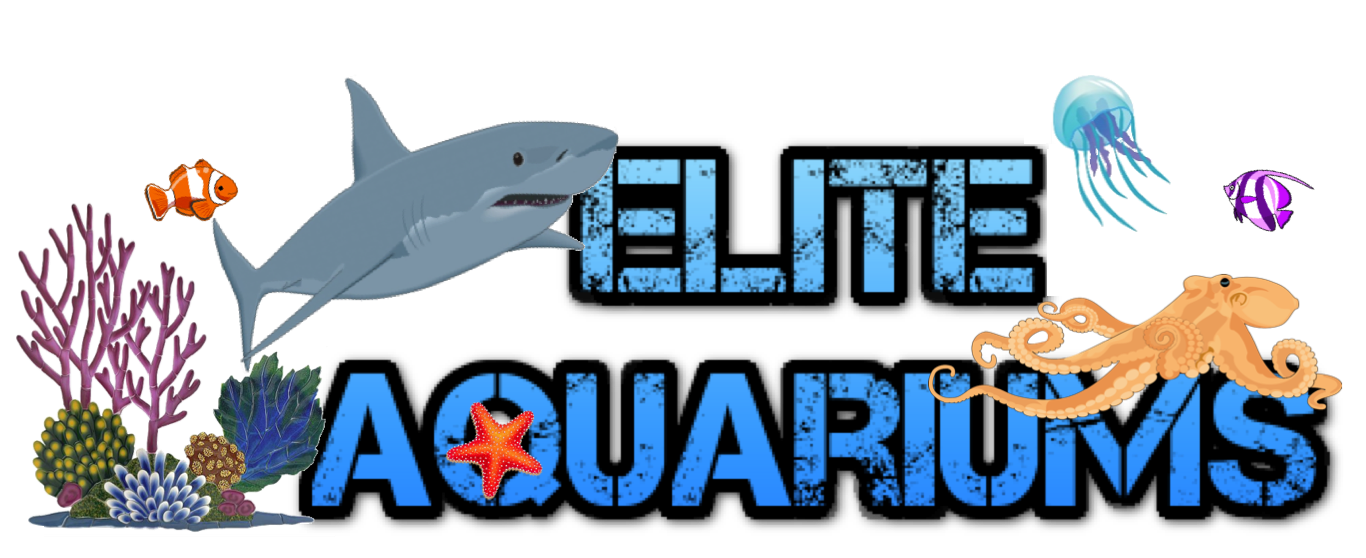Starting an aquarium is a lot easier than you might think. In fact, here at Elite Aquariums we’ve helped many customers get started the right way and stay on the right path. Good aquarium maintenance practices will lead to a healthy aquatic environment and thriving fish, providing years of joy for the hobbyist. Expensive and time-consuming problems can be prevented by spending thirty minutes on maintenance every other week. And like any hobby, the more you know about it, the more enjoyment you’ll get from it. So here are just a few aquarium basics to get you started.
AQUARIUMS: The larger, the better.
Believe it or not, larger aquariums are actually easier to care for. The more water you have, the easier it is to maintain “balance” in your environment.
LOCATION: It matters more than you think.
Pick a spot away from direct sunlight, windows, and heating or air vents.
EQUIPMENT
Filter: The heart of your tank that provides clean, healthy water
Air Pump: Adds an extra boost of oxygen
Heater: Fish can’t produce their own body heat, so they rely on the temperature of the water. That’s why a heater is essential.
Thermometer: The average ideal temp for freshwater tropical fish is 78º F.
Lighting: On average, you should leave an aquarium light on for 8 hours.
Gravel: Besides adding natural beauty, gravel/sand gives beneficial bacteria a place to live. This bacteria help break down the wastes your fish create.
WATER: Make it livable, breathable, and healthy. A key part of aquarium maintenance is the water change, which should be performed about every two to three weeks. In most cases, 15-20% of the tank volume is sufficient. Condition: Always add a conditioner when adding tap water to your aquarium to de-chlorinate it.
Aquarium Filtration
The proper function of the filter is essential. Trapped particles will decompose in the filter as they would in the tank. The filter should be cleaned once a month (A high fish load may require shorter periods).
Water chemistry is not visible; therefore, it is vital to check it on a regular basis. The best way to make this a routine is to check on the tank chemistry while changing the water.
The vital parameters are pH, nitrates, nitrites, and carbonate hardness (salinity for marine tanks).
Stability is the main factor with pH. pH in the range of 6.5 – 7.5 is suitable for most species, but they can adjust if slightly out of range.
Cycle: “Cycling” a fish tank means growing healthy bacteria on a new filtration system so it filters out dangerous toxins.
FISH: Start with one, preferably inexpensive. Here’s why. When setting up an aquarium for the first time, you want to make sure your tank is cycled properly and the equipment is working. That’s why it’s best to start with one inexpensive “test” fish from your local fish retailer.
Feeding: Feed once/twice a day and do not overfeed the fish.
Fish Compatibility: Not all fish play well together. Different fish have different personalities. Community Fish are good tank mates, while Aggressive Fish need special mates, or none at all. It’s always good to confer with your local fish retailer as to the best mix of species. And specifically, tropical fish and goldfish should not mix.
ACCESSORIES: Ready, set, decorate. Creating a beautiful aquarium is one of the most enjoyable aspects of owning an aquarium. Decorative corals, caves, ships, etc. not only make the aquarium stunning to look at, they also make the fish feel safe.
Artificial plants look real and are easy to maintain. But real plants help balance certain biochemicals and nutrients. Keep in mind, live plants do require some maintenance, such as trimming and additional fertilizers.
